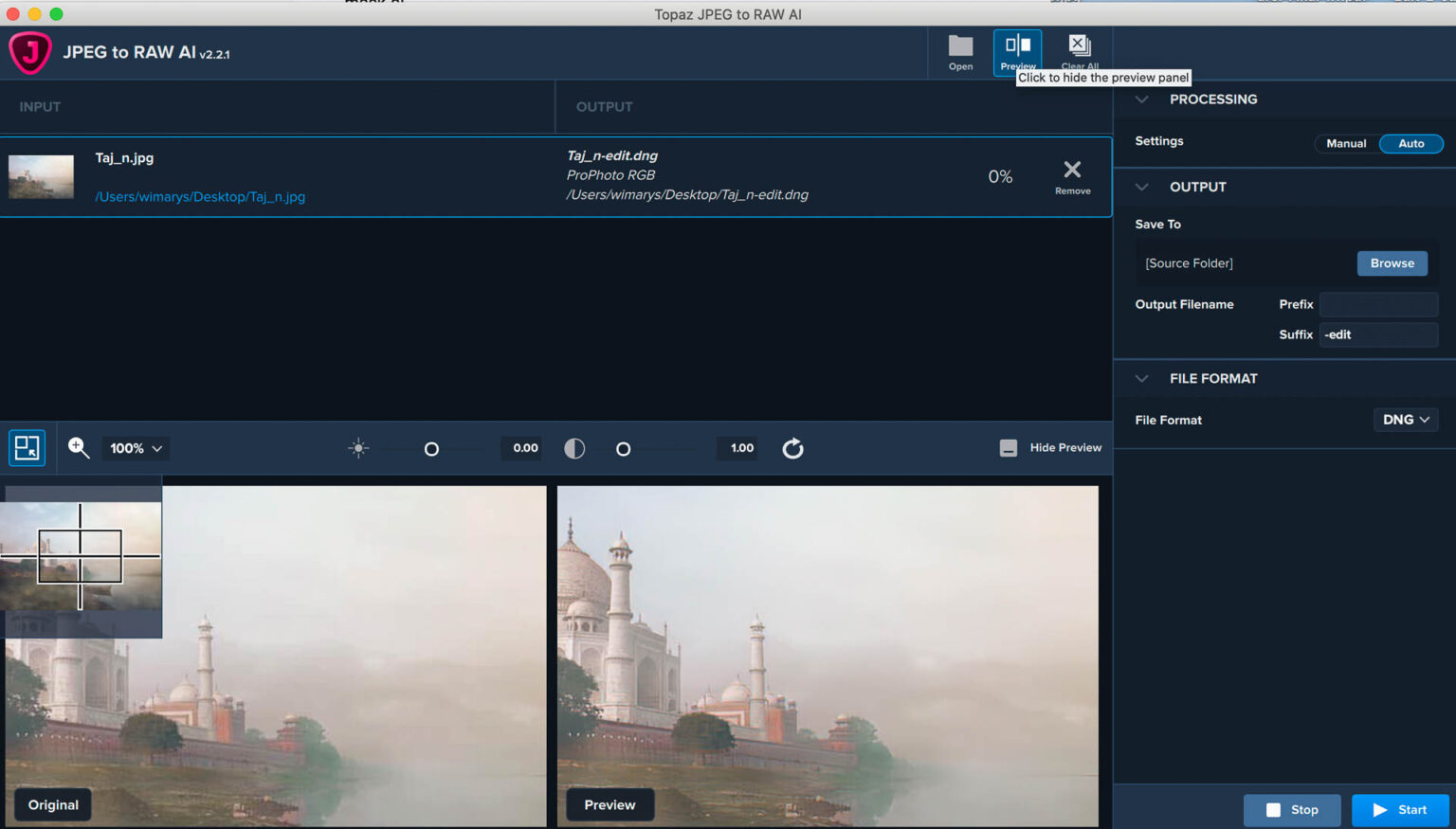


Raw files are accompanied by a JPEG that has the camera settings applied, so when you scroll through your images on the computer, or open the raw files in the manufacturer’s software, you see the image. Also, setting selections such as the white balance and filter effects aren’t ‘baked in’ like they are with a JPEG, which means you have more scope to change how the image looks. Raw files are often referred to as digital negatives because they contain the maximum amount of data that can be gathered by the camera. The format uses a lossy form of compression, which means that data is lost from the image when it is saved, helping to keep its size down. JPEG stands for Joint Photographic Experts Group, which is the name of the committee that defined the format’s standard, and a JPEG file has the file extension. Credit: Carolyn Mendelsohn 2) What is a JPEG?
Topaz jpeg to raw ai review iso#
If you decide to only shoot JPEG images, make sure that you select the largest sizeĬarolyn Mendelsohn chooses to shoot in raw to capture the maximum amount of data possible Nikon D800, 85mm, 1/2000sec at f/4, ISO 400. Before you can share a raw file, it needs to be processed and converted into a more accessible file format (usually a JPEG).
Topaz jpeg to raw ai review software#
Thankfully, this is provided by the camera manufacturer and there are alternatives from third-party software companies like Adobe, Phase One and DxO. Raw files, on the other hand, can only be opened and viewed in specialist software. You can upload them to Facebook or email them to a friend and they are visible. If you’re new to photography and the concept of editing images, JPEGs make a good choice because they are universally recognised and can be opened and viewed by any image-viewing or editing software. This usually comes down to a choice of two formats, JPEG and raw, with the option to shoot both simultaneously. When you’re setting up your camera for the first time, one of the decisions that you have to make is what file format you want to shoot in. With modern camera technology so good, do you still need to shoot the ‘unprocessed’ raw file as the camera sees it, which is often compared to a digital negative, or can you now get away with a click-and-go JPEG? We look at the issue in more depth and find some enlightening case studies. It is one of the oldest debates in digital photography and you will find adherents on both sides.


 0 kommentar(er)
0 kommentar(er)
